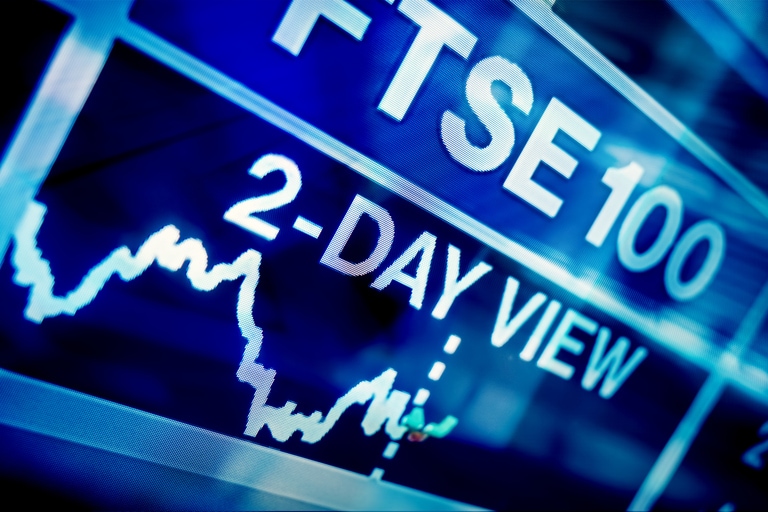It was a week of two halves for European equity markets last week, getting off to a flyer in the first three days with the Stoxx 600 setting a new record high, along with the CAC 40 and FTSE 100 moving above 7,500 for the first time since February 2020.
The latter part of the week turned out to be more challenging though, after the latest US Federal Reserve minutes showed increased anxiety among many Fed officials about high and persistent levels of inflation, with the result that most of the gains during the week disappeared, although the FTSE 100 was able to perform much better, finishing the week very much on the front foot.
US markets, on the other hand, had a much more negative week, reacting to a sharp rise in short- and long-term yields, as well as concern that the Fed might be forced to act much more aggressively in pulling rates off zero to head off an inflationary shock.
Friday’s non-farm payrolls report did nothing to alleviate these concerns, despite on the face of it yet another disappointing headline number, with 199,000 jobs added, well below the 450,000 consensus. For the second month in a row the headline number fell well short of expectations, however on all other levels the jobs report was much more positive. The unemployment rate fell again, this time to 3.9%, and back to the levels it was pre-pandemic, while the participation rate came in at 61.9%. More importantly, wages were much more resilient, rising 4.7%, well above expectations of 4.2%, while the November numbers were revised up to 5.1% from 4.8%. These wages numbers appear to be what has put upward pressure on yields, as it becomes more apparent that the Fed is running out of excuses not to raise rates in the coming months.
Friday’s report would appear to suggest that while there are plenty of vacancies, there appears little appetite to fill them. In both November and December, the number of jobs added has been disappointing, which would suggest that even with US employers having to pay up to get people back into the workforce, workers don’t appear to be in a hurry to return, despite over 10m vacancies, and only 3m fewer workers. This is something that could see further upward pressure on wages in the coming weeks and months and will certainly be food for thought for Fed officials when they look at the timeline for when to make their first move on rates.
As such, as we look towards this week’s market focus and today’s European open, the primary focus is likely to be on the US CPI inflation data for December, which is likely to add further spice to the discussion with estimates that we could see the headline number come in at 7.1%, up from 6.8% in November.
Last week’s move higher in yields took its toll on US equity markets, and the Nasdaq 100 especially, posting its biggest weekly loss since February 2021, while the US 10-year yields saw a one week rise of 25bps, closing at 1.76%, after briefly getting to within touching distance of 1.8%. Despite the surge in yields over the past week, the fall in equity markets has been relatively contained, however further weakness in bond markets could translate into further equity market weakness in the days ahead, especially if US 10-year yields move through 1.8% towards 2%. The increase in yields hasn’t been a uniquely US phenomenon, with yields in the UK and Europe also rising sharply.
German CPI inflation rose to 5.3% last month and its highest level since 1992, while EU CPI rose to a record high of 5%, helping to drive the German Bund yields up to within touching distance of 0%, closing at its highest level since May 2019 at -0.04%, as traders speculated on the prospect that the ECB may well have to raise rates later this year, despite insistence on the part of ECB officials that this was unlikely to happen. This comes across as wishful thinking on the part of markets. The ECB cannot afford to even contemplate raising rates given the weakness of government finances in the European countries who have very high debt to GDP levels, and who need borrowing costs to remain low.
UK gilt yields also saw a big increase last week, rising over 20bps, to 1.18%, helping the pound to outperform the US dollar and every other G10 currency in the first trading week of 2022. Last week’s sterling rally was also the third successive weekly gain against the US dollar, its best run since May last year, as speculation grows that another move on rates could come as soon as next month.
This week’s main focus, apart from the December US CPI report, is also set to be on the latest China trade numbers and US retail sales.
EUR/USD – Friday’s rebound has seen the euro recover from below 1.1300, but we still have resistance at the 1.1385 area and the December peaks. The bias remains towards the downside; however, we could see a squeeze higher, on a move through 1.1420 in the short term. We currently have trend line support at 1.1280.
GBP/USD – having recovered towards the 1.3600 area we have trend line resistance just above here from last year’s peak at 1.4250. To break the downside momentum, we need to break this trend line. Support now comes in at 1.3420 and last week’s lows.
EUR/GBP – broken below the November lows at 0.8450 with the risk we now head towards the 0.8280 area and the lows in 2020. Currently have some support at the 0.8330 area. Resistance comes in at the 0.8380 level and behind that at 0.8450.
USD/JPY – ran out of steam at 116.35 last week however for the upside momentum to diminish we would need to see a move back below the 114.80 area. The December 2016 highs at 118.60 remain the next target while above 114.70.
Disclaimer: CMC Markets is an execution-only service provider. The material (whether or not it states any opinions) is for general information purposes only, and does not take into account your personal circumstances or objectives. Nothing in this material is (or should be considered to be) financial, investment or other advice on which reliance should be placed. No opinion given in the material constitutes a recommendation by CMC Markets or the author that any particular investment, security, transaction or investment strategy is suitable for any specific person. The material has not been prepared in accordance with legal requirements designed to promote the independence of investment research. Although we are not specifically prevented from dealing before providing this material, we do not seek to take advantage of the material prior to its dissemination.







